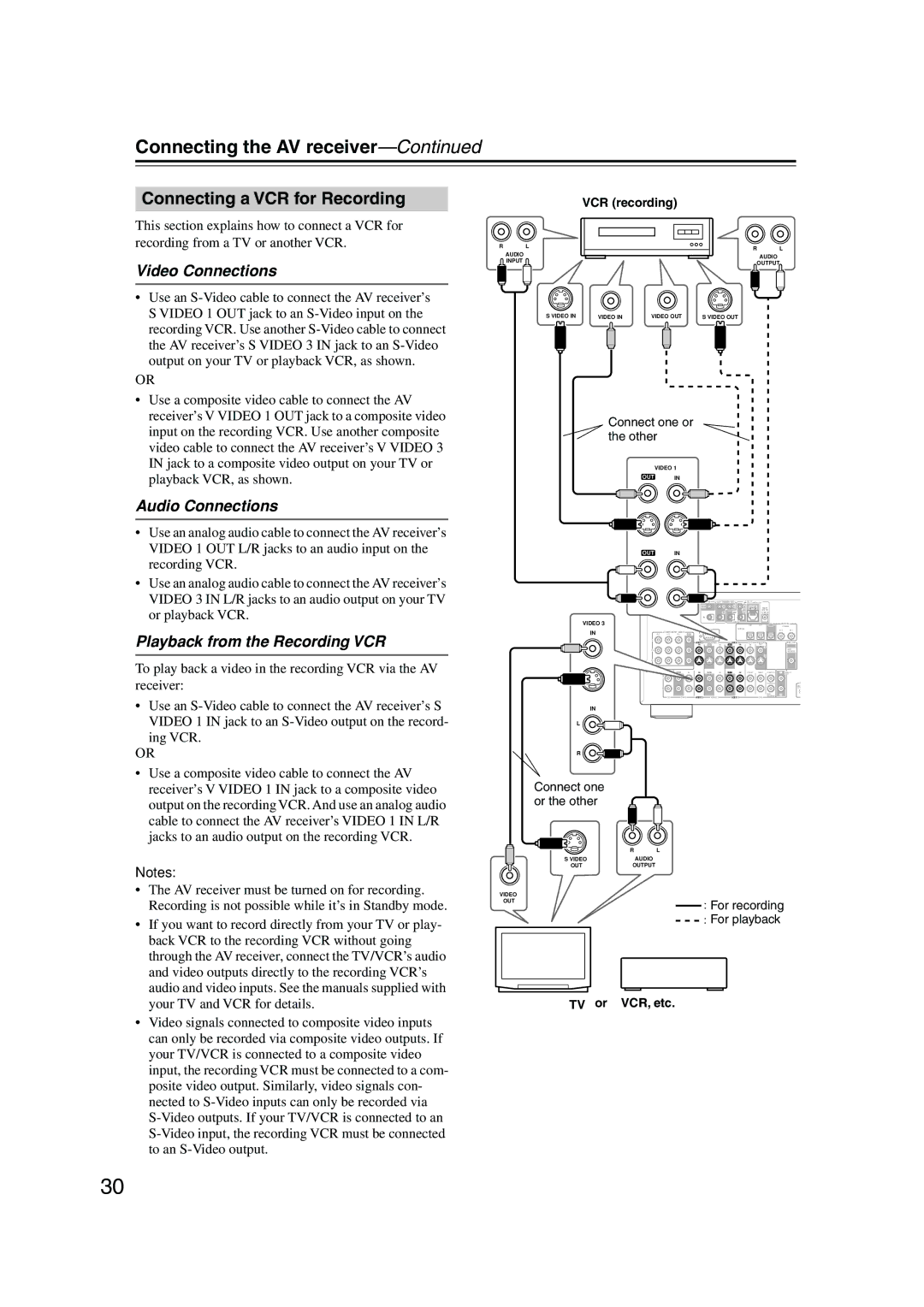DTR-4.5
Important Safety Instructions
Avis
For models having a power cord with a polarized plug
Precautions
Power
FCC Information for User
Make sure you have the following accessories
Supplied Accessories
Precautions
If in any doubt, consult a qualified electrician
Audio/Video
Features
Amplifier
FM/AM Tuner
Table of Contents
Table of Contents
Front & Rear Panels
Front Panel
Front & Rear Panels
Display
RS232
Rear Panel
Component Video in 1, 2, 3 27, 29
IR IN/OUT
Video 3 in 26
Optical Digital 26, 27, 29, 31, 32
Coaxial Digital 26, 27, 29, 31, 32
Video 2 IN/OUT 28
Remote indicator
Remote Controller
Receiver Mode
RC-587M
Remote Controller
DVD Mode
CD Mode
MD/CDR Mode
Reverse Play button
Tape Mode
Stop button
Rewind & FF Buttons
Installing the Batteries
Using the Remote Controller
About Home Theater
Enjoying Home Theater
Optical Digital Jacks
Connecting the AV receiver
About AV Connections
AV Connection Color Coding
Connecting the AV receiver
Connecting Your Speakers
Speaker Connection Precautions
Connecting the Speaker Cables
Strip about 5/8 15 mm
Connecting the AM Loop Antenna
Connecting Antenna
Connecting the Indoor FM Antenna
Attach the FM antenna, as shown
Connecting an Outdoor FM Antenna
Connecting an Outdoor AM Antenna
Using a TV/FM Antenna Splitter
Video Connection Formats
Connecting Both Audio & Video
Which Connections Should I Use?
Audio Connection Formats
Connecting Your TV or Projector
Monitor Out
Audio Connections
Video Connections
Connecting a DVD Player
Using Analog Connections
Your TV must also be connected via component video
Connecting a VCR for Playback
Using a Multichannel Connection
Connecting a D-VHS VCR for Playback
Component Video
VCR recording
Connecting a VCR for Recording
Playback from the Recording VCR
TV or VCR, etc
Using Optical or Coaxial Connections
Satellite, cable, set-top box, LD player, etc
Connecting a Cassette Recorder Connecting a CD Player
CD player
Analog Connections
Connecting a DAT, CD, or MD Recorder
Using Optical or Coaxial Connections Playback only
Digital Recording
Turntable with a Built-in Phono Preamp
Connecting a Turntable
Connecting Components
Turntable without a Built-in Phono Preamp
Connecting the Power Cords of Other Components
Turning On the AV receiver
Standby/On
Main menus
First Time Setup
About the Onscreen Setup Menus
Submenus
First Time Setup
Initial Setup
Digital Input
Buttons to select an input selec
Component Video Setup
Main menu appears onscreen
Tor, and then use the Left
Then use the Left and Right
Speaker Setup
Speaker Setup menu appears
Buttons to select
Double Bass
Default
Crossover
Buttons to select d. Surround
Speaker Distance menu appears
Speaker Distance
Tance, and then press Enter
Buttons to specify the dis- tance
Speaker Level Calibration
Changing the TAPE/MD/CDR Display
Repeat this step to select TAPE, MD, or CDR
Basic Operation
Selecting the Input Source
Start playback on the source component
Using Headphones
Setting the Display Brightness
Using the Sleep Timer
Basic Operation
Input source as follows
Displaying Source Information
You can display various information about the current
Interpreting Surround Channel Values
Listening to the Radio
Using the Tuner
Tuning into Radio Stations
Use the Tuner input selector
Deleting Presets
Presetting Radio Stations
Selecting Preset Stations
Displaying Radio Information
See About the Listening Modes on page 51 for
Selecting with the Remote Controller
Selecting on the AV receiver
Detailed information about the listening modes
Analog Dolby D DTS/DTS 96/24*2 Input signal format
DVD, LD, CD, etc
About the Listening Modes
Onkyo Original DSP Modes
Adjusting the Bass & Treble
Using the CinemaFILTER
Using the Late Night Function Dolby Digital only
Advanced Operation
Adjusting Individual Speaker Levels
Advanced Operation
Recording
Recording Audio
AV Recording
Recording Separate AV Sources
Analog/PCM
Advanced Setup
Decoder Setup
Dolby Digital
Advanced Setup
Audio Adjust Functions
Theater-Dimensional
Mono
Plii Music
Assigning Listening Modes to Input Sources
Use the Up and Down Buttons to select the signal for
Listening Mode Preset menu appears
Virtual Surr Level
Setting Preferences
IntelliVolume
Volume Setup
6-7., 6-8 V Trigger Setup
OSD Setup
Remote Setup
Digital Format
Ton, and then press the TV Input button
Changing the Remote Controller’s ID
Press and hold down the Receiver but
Control ID
Using Only Speakers in Zone
Connecting Zone
Using a Receiver/Integrated Amp in Zone
Zone
Buttons to select a. Powered
Hardware Setup menu appears
Zone 2, and use the Left
Zone 2 OUT L/R jacks can also be used as pre
Setting the Zone 2 Out
Outs Hardware Setup menu appears
Buttons to select 3. Hardware
Using Zone
Adjusting the Bass & Treble for Zone2
Using the Remote Control in Zone
Using the 12V Trigger
Using a Multiroom Kit with Zone
Using a Multiroom Kit with a Cabinet
Controlling Out-of-range Components
Controlling Other Components
Entering Remote Control Codes
Setting the MD/CDR Button to CDR
Codes for Integra DVD Players
Resetting Remote Mode Buttons
Resetting the Remote Controller
Controlling Other Components
Remote Control Codes
DVD DVD player
SAT satellite receiver
CBL cable receiver
ABC
SBR
NAD
Controlling a TV
Controlling a Cable Receiver
Number
Controlling a VCR Controlling a Satellite Receiver
Rec
Buttons
Learning Commands from Another Remote Controller
Using Macros
Making Macros
Running Macros
Troubleshooting
Troubleshooting
Can’t record?
Remote controller doesn’t work?
Can’t control other components?
Zone 2 has turned off?
Speaker distance cannot be set as required?
Sound changes when I connect my head- phones?
Speaker volume cannot be set as required?
Display doesn’t work?
Video Section
Specifications
Amplifier Section
Tuner Section
3 4 3 8 2

